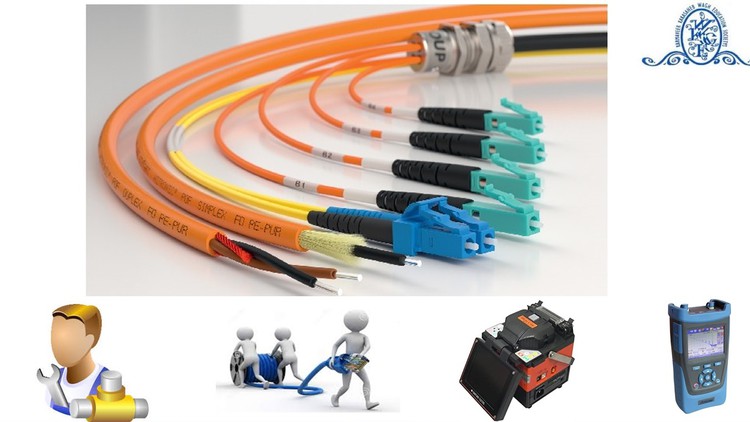Fiber Optics Network Design and Maintenance – Free Udemy Courses
Design and Maintenance
What you’ll learn
Fiber Optics Network Design and Maintenance – Free Udemy Courses
- Check the feasibility of the system and find the maximum data rate supported by the fiber optic link
- Fiber Optic Link Design
- Perform the Power Budget and Rise the Time Budget of the fiber optic link
- OTDR basics and its use to locate the faults & measure distances of cables
- Fusion Splicer basics and its use to repair the fiber Optic link
Requirements
-
Physics and Mathematics
Description
Fiber Optic technicians are in high demand right now and a bright career in Fiber Optic Network Design and Maintenance is just waiting for you!
Welcome to the exciting colorful world of Fiber Optics!
After successful completion of the course, students will be able to
- Use OTDR to locate the fault & measure the distances of cables.
- Use Fusion Splicer to repair the fiber optic links
- Perform the power budget & Rise the time budget for the fiber optic link
Check the feasibility of the system and find the maximum data rate supported by the fiber optic link
The course is divided into two modules:
Module 1:
- Introduction to Optical Link Design
- Power Budgeting Concept
- Power Budget case study
- Rise time budget Concept
- Rise time budget case study
Module 2:
- Introduction to Optical Instruments and Maintenance of Optical Link
- OTDR Basics
- OTDR Demo
- Fusion Splicer Basics
- Fusion Splicer Demo
Learning Objectives of Module 1 are:
- Analyze signal distortion between transmitter and receiver in a simple fiber-optic point-to-point link concerning attenuation and pulse dispersion.
- Do a qualitative estimation of the maximum transmission distance L at a given signal data rate.
- Do a quantitative characterization of the signal detection process and definition of the minimal detectable optical power for a particular type of signal distortion concerning a detection error criterion.
- Understand optical system components with typical specifications and applications.
Optical fibers are used to transmit information over long distances. Fiber-based systems have largely replaced radio transmitter systems for long-haul data transmission. They are widely used for telephony, Internet traffic, long high-speed local area networks (LANs), cable TV (CATV), and increasingly also for shorter distances within buildings.
The capacity of fibers for data transmission is huge: a single silica fiber can carry hundreds of thousands of telephone channels
Fiber-optic cables are immune to problems that arise with electrical cables, such as ground loops or electromagnetic interference (EMI)
Optical Fiber Networks are the future of today and tomorrow because of the mind-boggling data rate offered, in this first module of the course students will become experts in link design
Learning Objectives of Module 2 are:
- Study the troubleshooting instruments:
- Optical Time Domain Reflectometer (OTDR) and
- Fusion Splicer
- Analyze and correct the faults in Fiber Optics Networks using OTDR and Fusion Splicer.Important instruments in optical link maintenance are discussed in this module with an online demonstration so that students will get practical experience and learn howuse thisthis equipmentt for network maintenance.
Who this course is for:
- Beginner fiber optic network technicians










